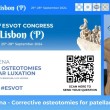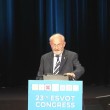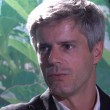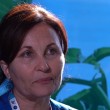
Peter Muir BVSc, MVetClinStud, PhD, MRCVS, MACVSc, Diplomate ACVS, ECVS
Professor, University of Wisconsin-Madison
I graduated in 1985 from Bristol University School of Veterinary Science in the United Kingdom. After working in private practice in the UK, I returned to Bristol and obtained a PhD in veterinary science in 1990. I then moved to The University of Sydney to undertake training in small animal surgery, obtaining a Master’s degree in 1992 in allograft biology. I completed my training in small animal surgery at the University of Wisconsin-Madison and became a Diplomate of the American College of Veterinary Surgeons in 1995. After periods on faculty at the University of California, Davis and The Royal Veterinary College, University of London, I am currently a Professor of Small Animal Orthopaedics at the University of Wisconsin-Madison.
G.S-S. Can you recall when you turned an interest into a decision to become a veterinarian and what made you make that decision?
P.M. Growing up in Plymouth, England, I had a long-standing interest in animals and in medicine. As a first year veterinary student at Bristol, I was taught anatomy by Drs. Dick Smith, Lance Lanyon, Allen Goodship, and Clint Rubin, and their teaching was the start of my interest in orthopaedic science.
G.S-S Since 1985 what developments in Orthopaedics have had the most impact upon your approach to orthopaedic surgery clinically?
P.M. One of the most important developments over the last 25 years has been the improvement that has occurred in the range of orthopaedic implants available for fracture repair in cats and dogs, including using of locking plates and plates designed for out-of-plane bending. This has greatly aided results of fracture treatment through use of stable fixation and improved patient rehabilitation. In addition, wider use of arthroscopy has yielded improved diagnosis and treatment of joint conditions in small animals. Arthroscopy has also been useful from a research perspective, and led to improved understanding of the pathophysiology of joint conditions in the dog, such as non-contact cranial cruciate ligament rupture.
G.S-S .With regards to your research, what work or technique are you particularly proud of and why?
P.M. As a veterinary student in Bristol, I became very interested in musculoskeletal anatomy and orthopaedic science. This was the start of my research interest in bone biology, in particular. Over time my basic science research on functional adaptation and mechanosensing in bone has led to published work which challenges the idea that the osteocyte is the primary mechanosensor in the skeleton. It is widely accepted that bone injury is very painful, but it is not widely accepted that the innervation of bone might have important regulatory influences on functional adaptation. The field of skeletal neurobiology is rapidly evolving and much has been discovered in recent years. It is now clear that the innervation of bone has an important homeostatic role in the physiology of the skeleton. Such research has important implications for several important diseases of bone, such as osteoporosis and stress fracture. This research is an on-going effort, and I expect that much more will be learnt over time. More closely related to my clinical work, my laboratory has published a number of papers on the disease mechanism for non-contact cranial cruciate rupture in dogs. The mechanism for this important condition is now much better understood than when I was a student at Bristol University. However, more work is needed in this area also. I am particularly proud of the book on cruciate rupture that was recently published by the ACVS Foundation and Wiley Blackwell and the work that was done with Dr. Mark Markel to establish the book series “Advances in Veterinary Surgery” with the ACVS Foundation. The contributors to the various chapters in this first book in the series have done a fabulous job of reviewing current knowledge in the field of canine cruciate rupture.















